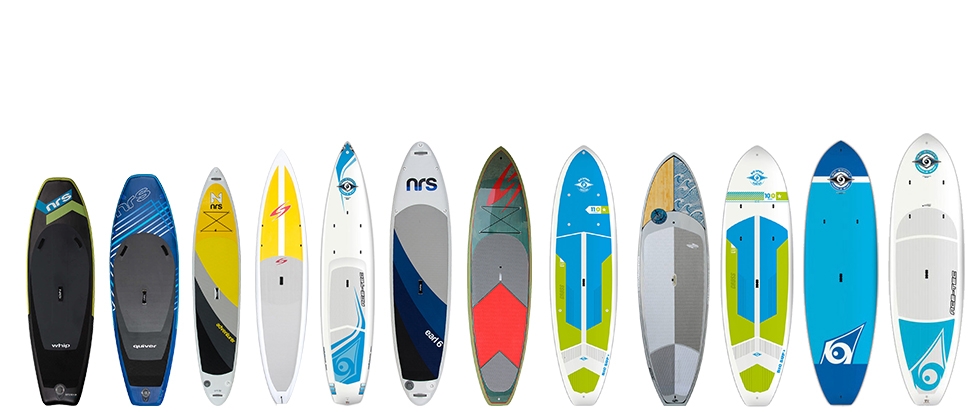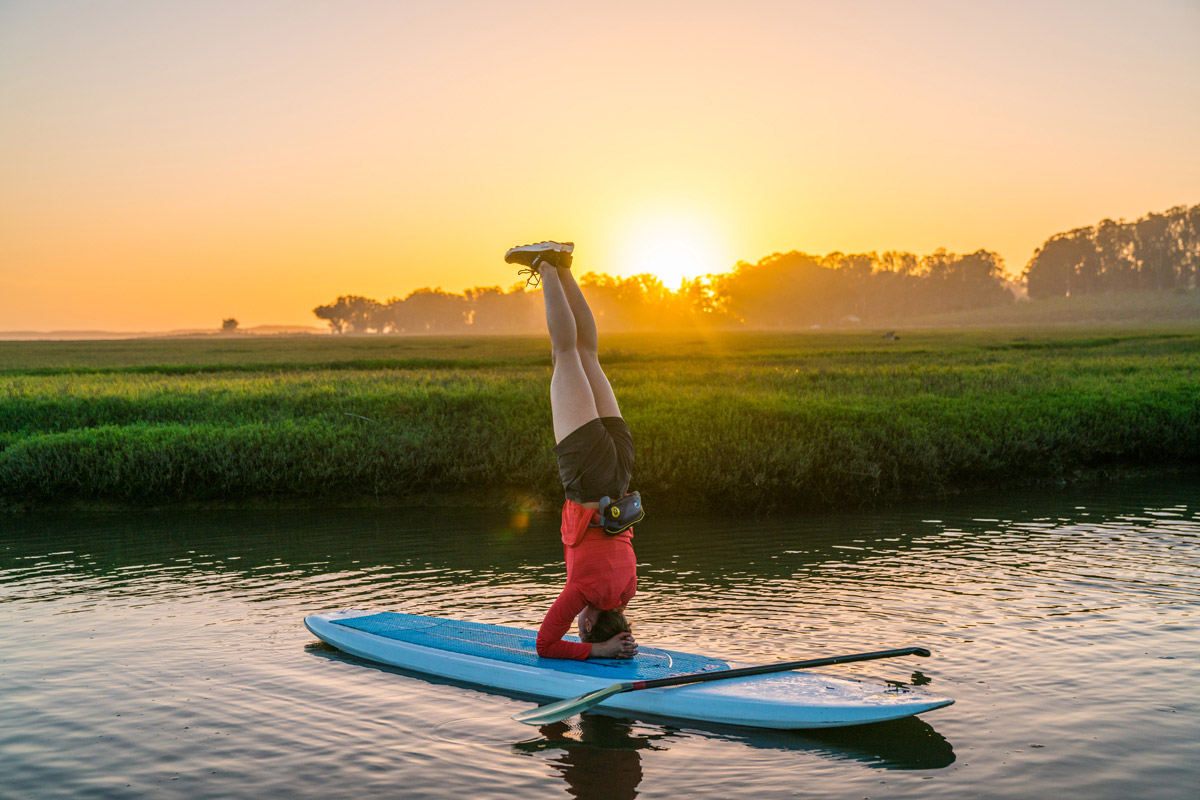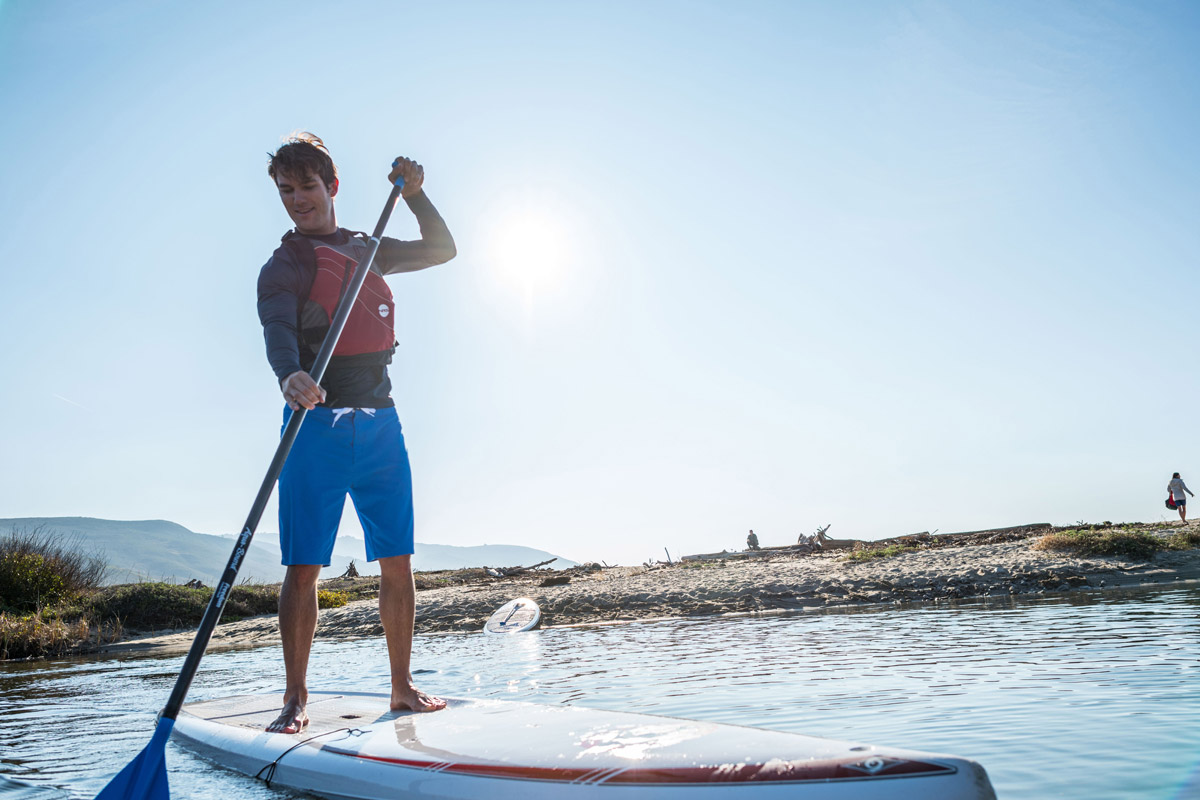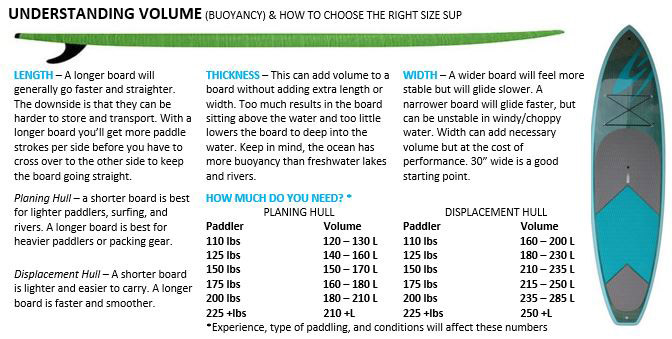HOW TO CHOOSE A STAND-UP PADDLE BOARD
What’s the best standup paddle board (SUP)? The answer is, “it depends.” SUPs are designed for specific water types, people, and uses, so answering 3 questions will help narrow down the selection so you can find the best SUP for you!
WHERE WILL THE SUP BE USED?
Lakes & Marshes
Ideal SUP: All-Around, Yoga/Fitness, Fishing
Lakes and marshes are typically “flat-water”, which is a paddler’s way of saying conditions are calm. An all-around board will be perfect for beginner paddlers. Yoga boards will offer a little more width so you have more balance for downward dogs. Anglers will need a lot of deck space with tie-downs for coolers, tackle boxes, etc.
Bays & Ocean
Ideal SUP: Touring& Racing
Bays and oceans can be calm, but frequently they’re choppy due to wind. In choppy conditions a touring SUP is ideal because they offer better tracking, and have more buoyancy. The improved tracking is created by the SUPs displacement hull (fat nose that cuts through rough water). Added buoyancy is created by the extra volume resulting from being longer than other boards. Touring SUPs also offer extra deck space for gear. More advanced paddlers may prefer a Racing SUP which is typically faster and narrower requiring greater balance.
Waves
Ideal SUP: Surfing
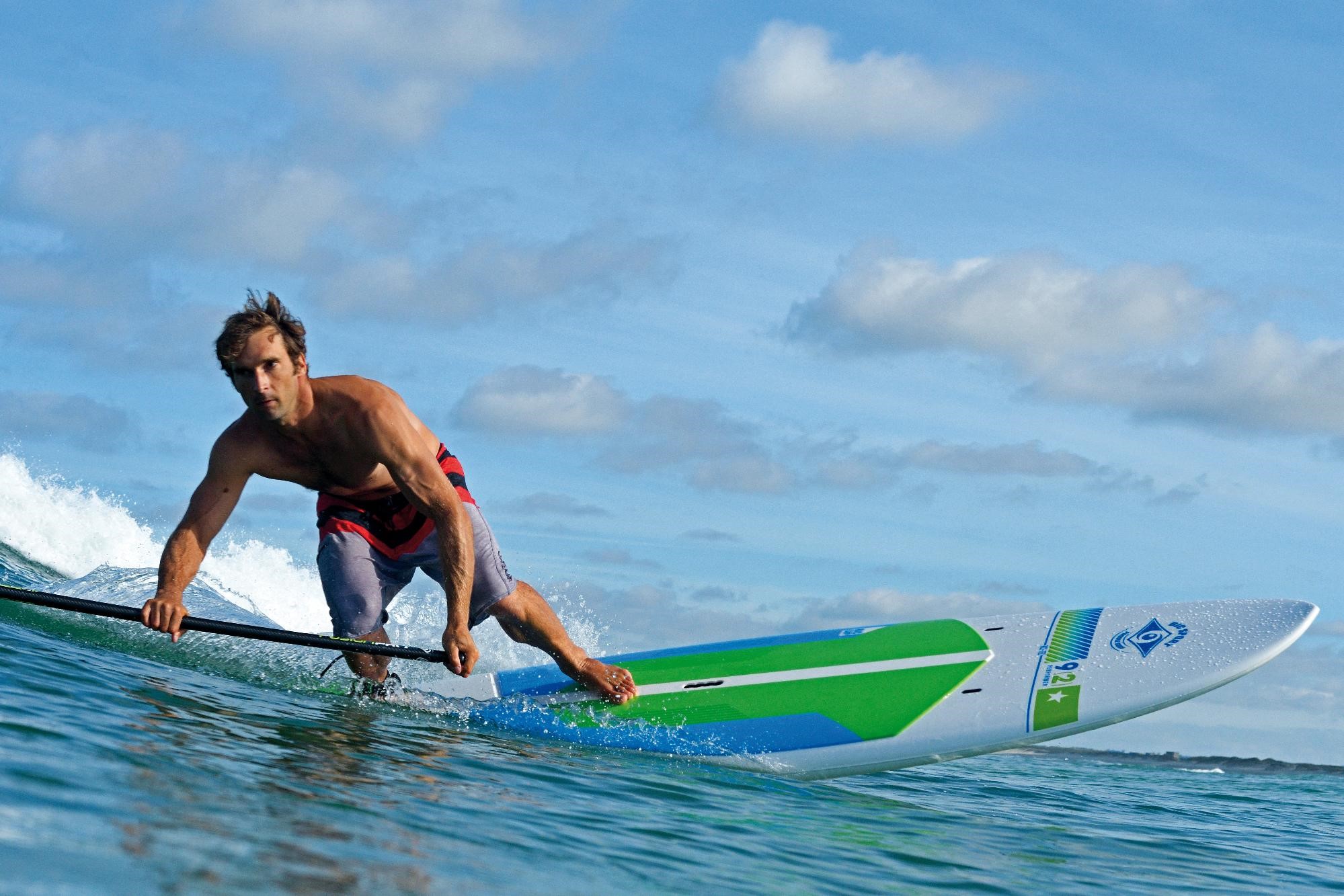
Rivers
Ideal SUP: Whitewater
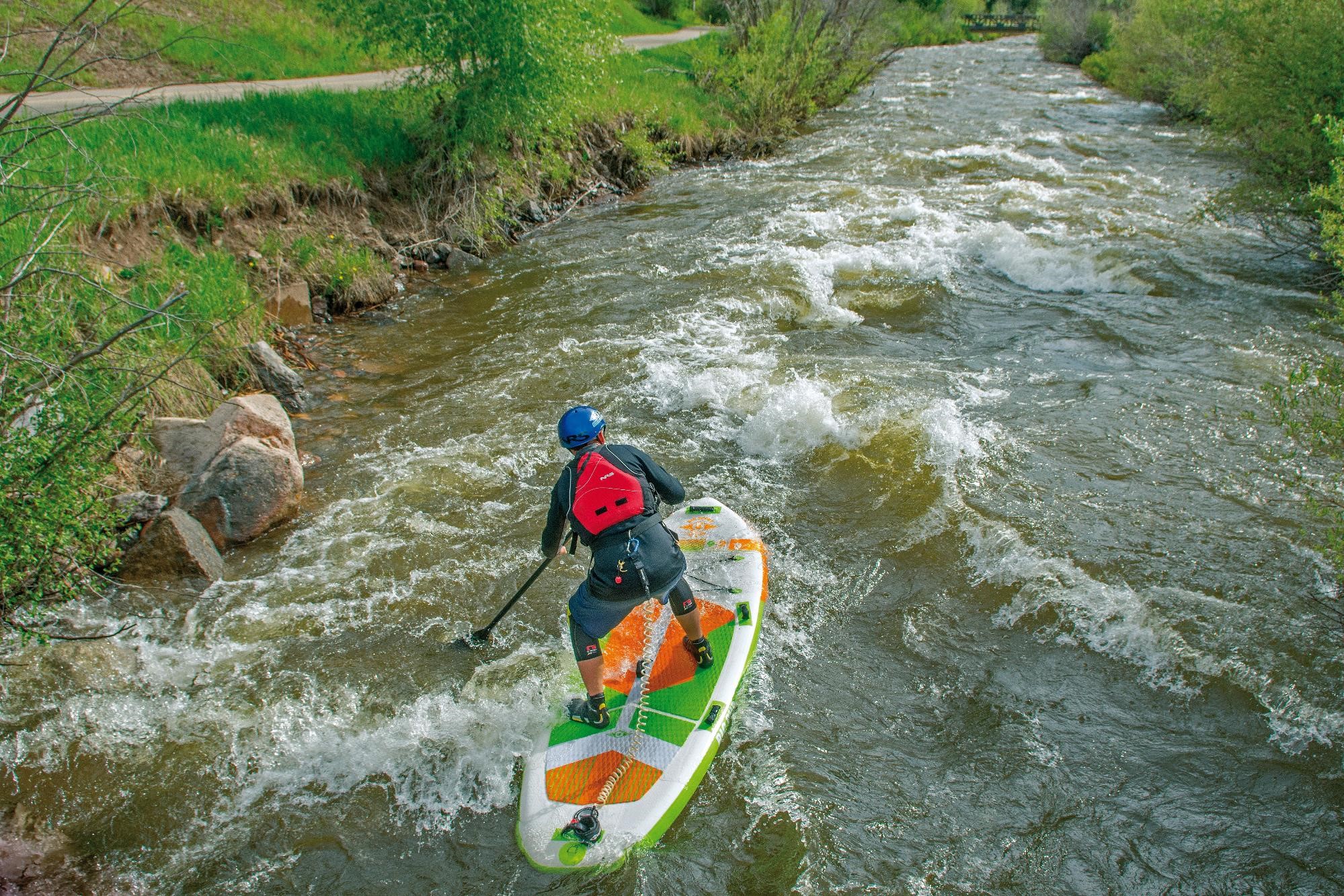
WHO WILL USE THE SUP?
Paddler Weight
SUPs in all categories come in a range of sizes to accommodate different size paddlers. Each SUP has a “weight capacity” rating to help paddlers choose the right size. It’s rarely a good idea to choose a SUP whose weight capacity is the same as the paddler’s weight…you want there to be some cushion because more buoyancy translates to more control.
SUP Width
Perhaps the most important dimension is the width. A wide board is more stable, while a narrow one is faster. However, don’t underestimate stability—a few extra inches can make a board fun for everyone, while a narrow, less stable model might frighten some folks off the water. An extra inch will make no noticeable change in your forward speed, and the extra stability may help you paddle more efficiently.
SUP Length
Generally speaking, longer SUPs slice through the water straighter (known as “tracking”), and therefore go faster than their shorter siblings. Shorter SUPs, however, swing from left to right a bit with each forward stroke, making them super maneuverable for “skinny” waters. On the flip side, longer SUPs take more space and finesse to turn quickly, while shorter SUPs need more strokes to cover a given distance. Depending on the water and your expectations, one may be preferable. If you need a little of each, an All-Around SUP may be the perfect, one-SUP-fits-all choice.
HOW EXPERIENCED IS THE PADDLER?
There are a lot of nuances to SUPs.
Nose shapes
Nose design falls into two main categories: wide and narrow. A wide nose provides more flotation, which makes it easier to catch waves, and its extra volume is also helpful if you plan to carry gear. A narrow, or pointed, nose cuts through the water, as opposed to riding over it. Race and cruise boards rely on the pointed nose, especially in choppy conditions.
Tail shapes
The tail shape of a board will have a dramatic effect on the way it handles when you start catching waves. The science behind SUP tail design is taken straight from the design of surfboard tails. A good rule to remember is that more angular shapes will give you sharper turns, whereas a rounded shape will give you more progressive and smoother turns. A round or pin tail will hold the water longer, making it stable in bigger surf. A square or angular tail will release water, making it looser, more skate-like, and snappy.
Rocker
“Rocker” describes how curved a board is when viewed from the side. A SUP with more rocker will turn more quickly. Surfboards have the most rocker; race boards and cruising boards have less rocker.
Bottom contour
The shape of the board’s bottom will have an effect on how it handles. Most boards fit into either a flat planing bottom shape or a belly displacement bottom that pushes water to the side. Other possible shapes include a concave bottom that holds water through the length of the board, which increases lift and decreases drag while surfing. If you go to a custom shaper, you can find even-channel and V-bottom hulls that are a direct carryover from regular surfboards.
Rails
The edges of the boards are called “rails,” and help determine how a board handles. A cruising or family board will have thick rails for increased stability. Performance race boards and surfboards have many different shapes of rails, depending on the designer and the characteristics they’re looking for. If you want to know more, buy a board-shaper a six-pack, and he’ll talk to you all night about the intricacies of rail design.
Fins
SUPs come with one, two, or three fins and sometimes even four or five. For boards used only on flat water in bays, ponds, lakes, and estuaries, a single fin works well. The tri-fin setup gives you the versatility to run a large center fin on calm water or two side fins (“side bites”) in the surf. The more fins a board has, the more specialized and surf oriented it is. You can always experiment with different fin shapes, sizes, and materials as you progress.
Traction Pads
The area of grippy foam on top is the traction pad. A race board may have a small traction pad, as you’re usually pretty static in your stance. A surfboard has a large traction pad, so you can move back or practice your cross-step up to the front and hang ten. If yours has no traction pad, you can either buy one separately or wax your board like a surfboard.
Storage
If you spend a long time on the water, you’ll need to bring extra gear. Touring SUPs have bungee cords, or insets for attaching bungee cords, so you can tie down a dry bag.
SUP ACCESSORIES
PFD
A personal flotation device, life jacket, or PFD, whatever you call it, get one that you like to wear, so that you WILL wear it.
PADDLE
Do not skimp on your paddle; it’s your motor.
LEASH
You should always use a SUP leash, but especially if you’re paddling out in rough water. SUP leashes are different than surf leashes in that they’re coiled so they don’t get tangled in the paddle. They also attach to the paddler’s calf instead of their ankle because the boards are much heavier and your calf is much stronger. Whitewater paddler’s will want to wear a breakaway leash to be able to release themselves quickly if tangled in underwater branches.
CAR RACK
Get your SUP to the water and back safely and securely.
SUP CLOTHING AND SHOES
Dress for cold water, sunny weather, and rainy, windy weather.
DRY BAGS
Keep your lunch and extra clothes from soaking, and then set them on the shoreline.
WHISTLE AND SAFETY GEAR
Remember to always have an audible and visual signal with you.
If you’re looking for instruction, check in with one of our qualified guides for an INTRO TO STAND-UP PADDLING session. The most important thing is to determine the right board for you.
